A one-stop dashboard to provide meaningful & relevant property insights.
👩💻
My role
Leading product designer
💼
Brand
PropertyGuru
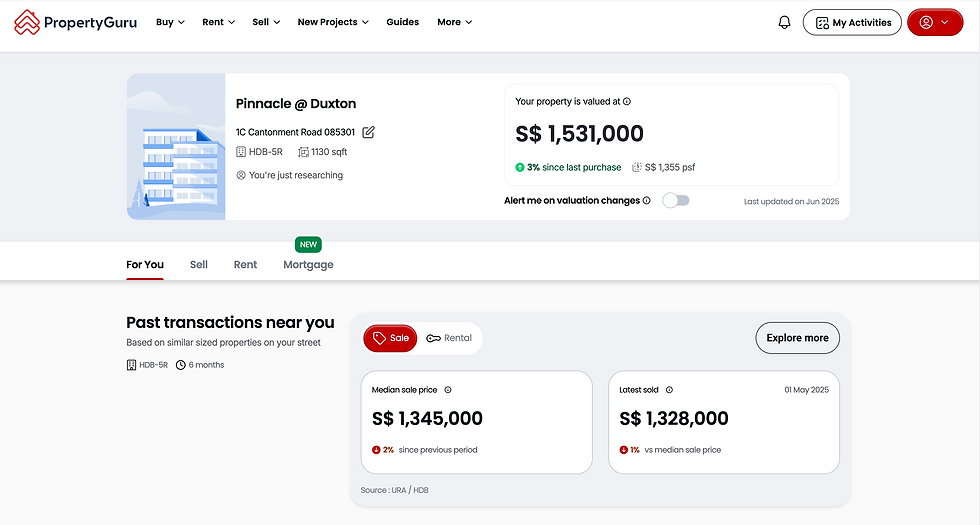
It started with a bold idea💡
A new platform that empowers homeowners with insights—starting from zero.
No prior research. Just a shared vision.
What if homeowners could see everything about their home in one place?
🔍
Gather insights
We had no prior blueprint, only a goal: launch a minimum viable product (MVP) fast. That meant building while learning—designing forward while listening back.
🔧 Methods
Team alignment meetings
Identify target user persona
Internal workshops
🔭
Design Vision
Anchored in user needs and business goals, this vision sets the direction for our MVP.
Relevant insights & actionable data
Trustworthy and transparent sources
Inspire proactive property management
🔑
Target Audience
Referencing our established personas 🔗, we zoomed in to define the audience most relevant to this project.
High-intent* homeowners
Low-intent* homeowners
Passive Homeowners
Landlords
Renters
Agents
*intent to sell their property
🤸
Design Principles
Drawing from stakeholder goals, user needs, and existing insights, I crafted key design principles to guide our approach from vision to execution.
✅ Tailored Content
Principle #1
Relevant & Meaningful
Present homeowners with relevant and meaningful data, including property values, market trends, and financial summaries.
✅ Smart Notifications
Receive timely alerts for key property-related activities, market fluctuations, and potential savings opportunities.

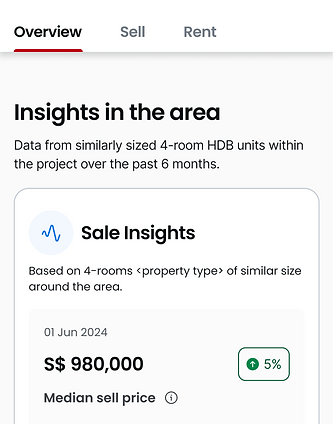
Principle #2
Convenient
✅ Clear overview
✅ Flexible navigation
Easily navigable dashboard that offers a quick and clear overview of what we can offer.
Ensure that users can effortlessly switch between different aspects of their properties without feeling overwhelmed.
Principle #3
Inspire
An Action
✅ Actionable insights and alerts
Translate data into actionable insights, guiding homeowners on potential cost savings.


Principle #4


Transparent
✅ Clear data source & honest messaging
Clearly communicate where the information is sourced from and how it's calculated. If the property value is an estimate, disclose the methodology to enhance user trust.
✅ Designed to evolve
Principle #5
Flexible &
Modular
Focus on lean, modular designs with flexibility in mind—just enough to launch the MVP, and designed to evolve.
Modular wireframes components (mobile)




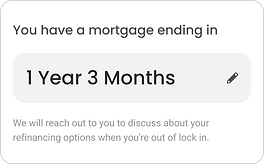

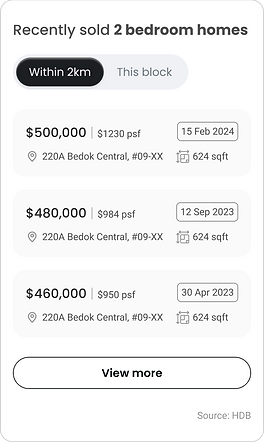



Integration into hi-fi wireframes
How the components are integrated into the MVP wireframe.


🛠️
Design-led Guerrilla Testing
Ahead of launch, we ran a quick internal test using printed modular components, inviting colleagues outside the project team to provide unbiased feedback and help us gather insights on feature priorities and what users were most interested in seeing next.
Homeowner Playground (Online testing)
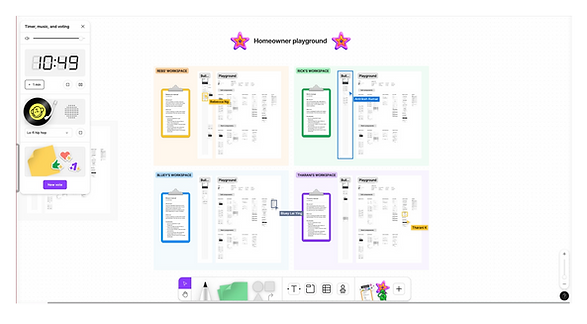
Homeowner Playground (In-Office)


Read more about Homeowner Playground 🔗
👀
Top 3 insights
Data driven individual prefer accessing raw data than summary.
Highest and lowest
transactions are the most compelling to sellers.
Buying and selling properties often occurs simultaneously.
🚀
MVP Launch
Designs were slightly tweaked to reflect the insights gathered and we were due for launch!





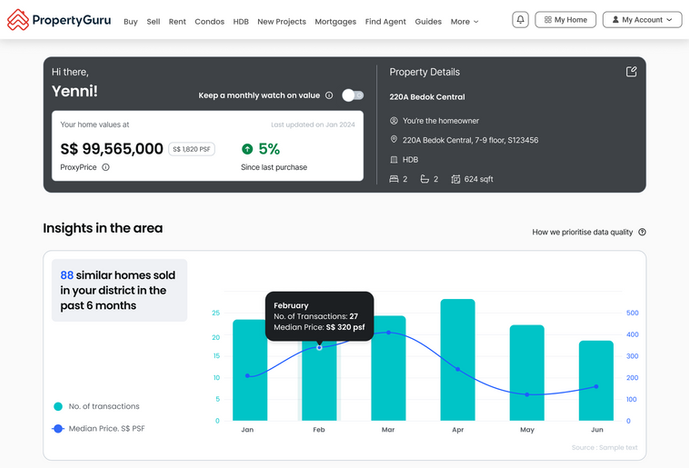

🏁
Results
Good start on volumes, healthy engagement on dashboard, clear room to scale in the first month.
1.7k+
Onboarded
Users
with 4
entry points
2.9k+
Searched
Properties
Half the users searched
for > 1 property
3.5%
CTR on Sell
vs 0.8% CTR on Prop
Valuation Tool
4.2/5
CSAT
82% Top 2 Box
👣
Next Steps
👩🏻💻
Moderated Usability Test
Working with our researcher, we conducted moderated usability sessions with target users, using a high-fidelity prototype for release 2 to observe task flows and gather feedback through guided walkthroughs.
✍️
Plan Feature Enhancements
We planned for feature enhancements by adding features that didn’t make it into the MVP, exploring opportunities for personalization and deeper insights, while testing smaller updates through A/B testing and feature flagging.
📌
Prioritize Refinements
Using these insights, we prioritized updates and enhancements for the next release. Key fixes were addressed quickly, while high-impact improvements were added to the product backlog for future iterations.
♻️
Iterate, Iterate, Iterate...
We continued validating the product vision to ensure our design and roadmap stayed aligned with real user behavior, keeping us in a build–measure–learn loop as we scaled.
🔥
Challenges
No prior research
Ensuring flexibility for future evolution
The project started from scratch—there was no prior research to guide the design process.
The MVP needed to be modular and adaptable to focus on speed while remaining open to iteration.
Design system in transition
This project coincided with a major design system upgrade, making it challenging to reuse existing components cleanly or consistently.
✅
Solutions
Guerrilla Testing (Homeowner Playground)
Scrappy internal tests with non-team colleagues gathered unbiased insights on priority features
Designing Modular, Flexible Components
Building a library of modular components supported rapid iteration and a scalable design system.
Collaborated closely with the design system team to bridge gaps
As the design system was evolving in parallel, I worked closely with the designers maintaining it to stay aligned on guidelines and component updates. Where gaps existed, I adapted flexibly by reusing what was stable and customizing where needed.
✦ More from my Portfolio ✦



